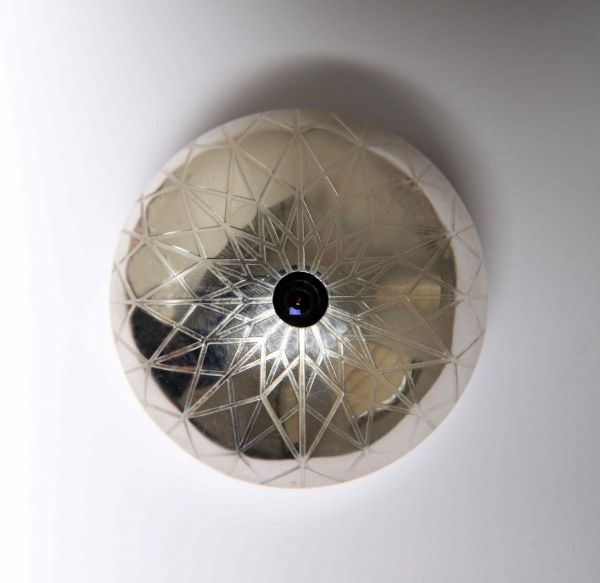
Panopticam, wearable surveillance system. (Artist: Heidi Hinder, miniature video camera, etched silvered gilding metal, 2007)
As this fantastic opportunity to fuse craft practice with technology interaction kicks off, it’s a great chance to introduce my Craft + Technology residency project from the very beginning. Firstly, here’s a little more about my idea:
The project, called ‘Money No Object’, aims to explore notions of value, and value systems, through the lens of designed and crafted interactive coins.
Objects representing a certain value have pervaded human exchanges and interaction for about 4000 years through the history of money. Coins in particular are collected, in part, for the value of their stories; these tiny canvases onto which artists have inscribed power and politics, carved global events and cast national identity. The crafted artwork of the coin-object is an enduring social documentary, ubiquitous, universal, yet barely noticed as a form of mass communication. From the depths of oceans or wishing wells, to the bottom of your bag or pocket, coins are pervasive, continually on a journey and imbued with meaning, as they travel between people and places at points of trade or chance. The intimacy and intricacy of these tactile, portable, hand-engaging objects, is drafted on a scale immaterial to their significant influence. Coins are frequently attributed with talismanic power; made into jewellery and worn for luck or protection, determining fate at a flip, or blessed by the Sovereign and given as healing alms.
Similarly, digital technology has assumed a compelling and mysterious power beyond itself, with an arbitrarily attributed value, the appetite for which, like coins and money, would appear insatiable. Everywhere and nowhere, this elusive form of mass communication is equally universal, portable, pervasive, a nebulous hub around which humans connect and interact.
So this is the story of change. It is not possible to eliminate material coinage until there is a globally accessible alternative. Yet while trading relies on trust, the intersection of future digital technologies with palpable currency remains precarious. As Nick Harkaway observes in ‘The Blind Giant: Being Human in a Digital World’, if we want to establish trust, we need to experience touch; and surely he means a feeling beyond the flat, cold sensation of the touchpad or screen. The Internet of Things must consider the object of money, even if there is a possibility that money will become no object.
Now, at the start of my second week in the Studio, the challenge of course is the small matter of the best way to begin this process, how to try and articulate my ideas for ‘Money No Object’ through my craft practice and creative technology. At least in a recession, there is no shortage of suitably bizarre and entertaining ideas around the subject. Just last week there were reports that the US Treasury should mint a $1 trillion dollar platinum coin in order to evade the debt ceiling crisis. Then online, I watched in fascination as the sorting of algorithms, a process used in stock market trading, was represented through the choreography of a Hungarian folk dance: the Bubble Sort. So as I attempt to flip my own interactive coin into this infinite pool of monetary material, I’m excited to see where it will land.

